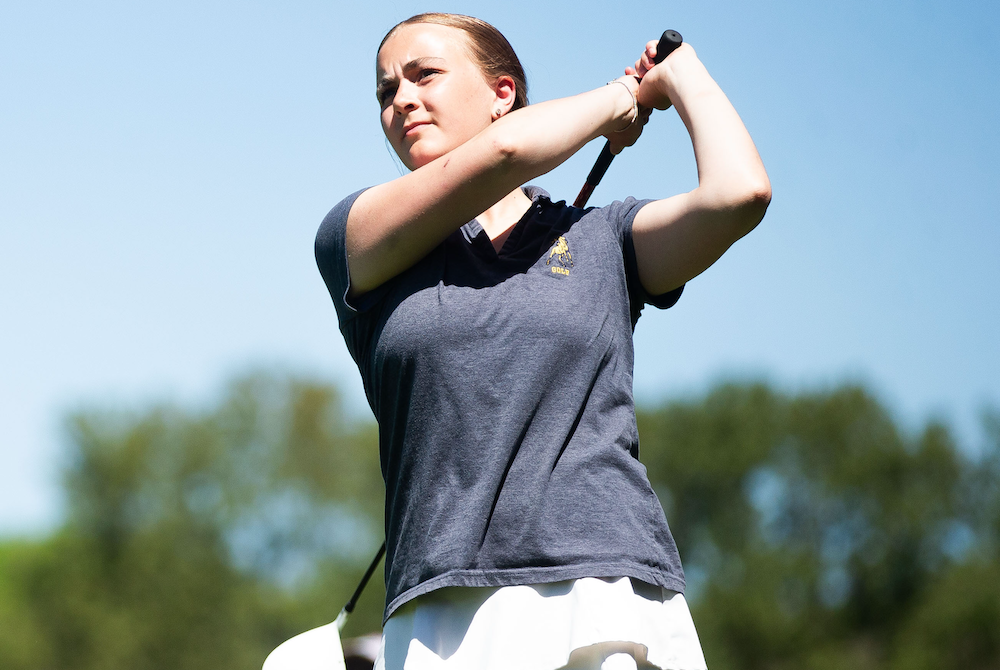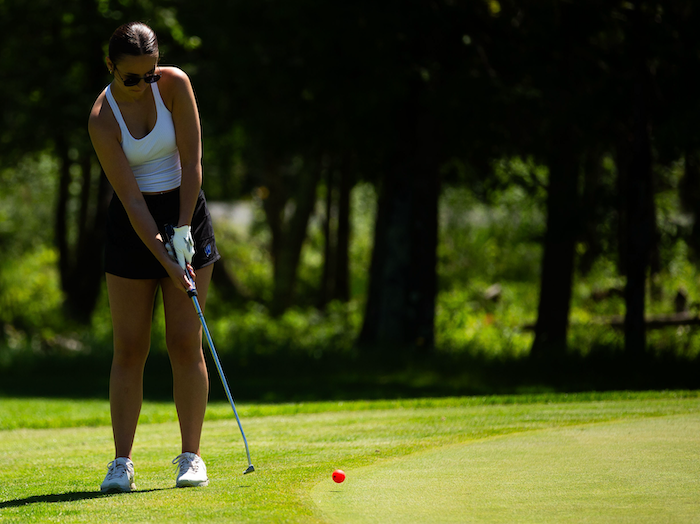
Casting Lines for Future Tournaments
August 12, 2016
By Jack Roberts
MHSAA Executive Director
The MHSAA is best known to the public for the tournaments it conducts to conclude the fall, winter and spring seasons each school year.
These tournaments, the first and largest program of the MHSAA, have survived the Vietnam War, the Korean conflict and two World Wars. They have survived the technology bubble, the housing collapse, the energy crisis and the Great Depression.
MHSAA tournaments existed at the dawn of aviation and at the time of our nation’s lunar landing. Popes, presidents and governors have changed and changed again and again, and MHSAA tournaments roll on year after year.
But the sense of tradition and permanence and inevitability of MHSAA tournaments doesn’t dissuade us from asking questions about our tournaments, even some of the most basic questions. Here are two.
Question #1
I have long been and will always be an advocate for a Ryder Cup format for the MHSAA Golf Finals, and a team tennis approach to the MHSAA Tennis Finals; but 90 years of tradition is hard to overcome. Might this be a more exciting format? Could it be co-ed? Could it reverse the decline in boys tennis participation, and increase girls golf participation? Wouldn’t it be fun to try?
Periodically, the International Olympic Committee requires each of the designated Olympic sports to defend its status, to state its case why the sport should remain a part of the Olympic program. Then, after a series or votes that retain one sport at a time, the IOC drops the sport that makes the weakest case. It does so to make room for one of the previously unlisted sports that makes the best case for inclusion.
This would appear to keep the existing Olympic sports on their toes, and to keep the Olympic movement fresh and reflective of modern trends in sports.
While I would not enjoy the controversy, I can see the potential for some positive results if the MHSAA were to invoke the same policy for determining the 14 tournaments it will provide for girls and the 14 for boys.
This might cause us to consider more deeply what a high school sport should look like, or at least what an MHSAA tournament sport should stand for.
On the one hand, we might be inclined to drop tournaments for those sports that involve mostly non-faculty coaches and non-school venues, or require cooperative programs to generate enough participants to support a team, or resort almost entirely to non-school funding, or cater to individuals more than teams.
Or perhaps this process would cause policymakers to forget traditional thinking and ask: “In this day and age, should we shake off traditional notions of sport and consider more where modern kids are coming from?” That might mean fewer team sports and more individual sports, more “extreme” sports like snowboarding and skateboarding, and more lifetime sports, meaning not just golf and tennis and running sports, but also fishing and even shooting sports.
Currently, MHSAA policy states that the MHSAA will consider sponsorship of a tournament series for any sport which 64 member schools conduct on an interscholastic basis as a result of action by the governing boards of those schools.
Should the only question be how many schools sponsor a sport, or must an activity also have certain qualities and/or avoid certain “defects?” What should an MHSAA tournament sport look like and stand for?
Question #2
Bristling from criticism that his association is a money-grabbing exploiter of children, my counterpart in another state said, “If we were running our programs just to make money, we would do very many things very differently.” I knew exactly what he meant.
Because we care about the health and welfare of students, because we mean what we say that the athletic program needs to maximize the ways it enhances the school experience while minimizing academic conflicts, and because we try to model our claim that no sport is a minor sport when it comes to its potential to teach young people life lessons, we operate our programs in ways that make promoters, marketers and business entrepreneurs laugh, cry or cringe.
If money were the only object, we would seed and select sites to assure the teams that attracted the most spectators had the best chance to advance in our tournaments, regardless of the travel for any team or its fan base. If money were the only object, we would never schedule two tournaments to overlap and compete for public attention, much less tolerate three or four overlapping events. If money were the only object, we would allow signage like NASCAR events and promotions like minor league baseball games.
Those approaches to event sponsorship may not be all wrong; they’re just not all right for us. And we will live with the consequences of our belief system.
During a typical school year, more than 20 percent of the MHSAA’s 2,097 District, Regional and Final tournaments lose money. Not a single site in golf, skiing or tennis makes a single penny. In no sport did every District, Regional and Final site have revenue in excess of direct expenses.
In fact, in only three sports – boys and girls basketball and football – is revenue so much greater than direct expenses overall that it helps to pay for all the other tournaments in which the MHSAA invests.
That’s right: invests. When we present our budget to our board, we talk about the MHSAA’s investment in providing tournament opportunities in all those sports and all those places that cannot sustain the cost of those events on their own. How much is this investment worth to students, schools and society?
These two are core questions that require our focus far in advance of talk about scheduling, site selection, seeding and the myriad matters that too often hijack our time and attention.

Bark River-Harris Takes Championship Steps with Team, Individual Sweep
By
Jason Juno
Special for MHSAA.com
May 29, 2024
CRYSTAL FALLS --- Bark River-Harris went home from last year’s Upper Peninsula Division 2 Girls Golf Final with some hardware. Just not the kind the Broncos wanted.
After finishing third the year before, they earned the runner-up trophy at the 2023 championship tournament, and Ava McDonough also took home a runner-up finish.
This year at Young’s Golf Course, the Broncos won the team title and McDonough took the medalist honor.
“It’s pretty great. We’ve been working for it for three years now, and it feels really good to finally accomplish it,” she said. “Last year we got second. I got second individually.
“I mean second’s good, but first is better.”
 It was really good for the Broncos’ entire team, which won their first U.P. title since claiming back-to-back Division 3 championships in 2014 and 2015. They finished a dozen strokes fewer than runner-up West Iron County (451). Norway was third, Stephenson fourth and Munising fifth.
It was really good for the Broncos’ entire team, which won their first U.P. title since claiming back-to-back Division 3 championships in 2014 and 2015. They finished a dozen strokes fewer than runner-up West Iron County (451). Norway was third, Stephenson fourth and Munising fifth.
“It’s amazing,” Broncos coach Matt Sly said. “I’ve been with these girls now, this is our third year. We took third three years ago, second last year. They worked really hard this year, and they were able to do it.”
McDonough carded a 101 to earn the medalist honor.
“My drives were pretty good, and my chipping I did good,” she said. “My putting was not very good. That was the only thing that really killed me. Otherwise, it was all pretty good.”
Sly said she's been playing well this entire season.
“She’s just an all-around good player,” he said. “She’s good off the tee, she has good short game and she was able to put it all together today.”
McDonough finished just one stroke ahead of teammate Ella Boney, who was runner-up with a 102.
“She played exceptionally well today,” Sly said of Boney. “She was several strokes better than her average.”
Munising’s Jailen Hancock and West Iron County’s Addison Franzene both carded 105 to tie for third. The Wykons’ Kya Dallavalle finished fifth with a 108.
McDonough said improvement over the last year has been about hard work, practice, helping each other out and not getting down when things went badly.
“Four of the five are seniors,” Sly said of McDonough, Boney, Zailey Cortez – who placed 13th – and Melody Racicot. Sophomore Dakota Bridges took 16th. “They’ve been waiting for this for a while.”
PHOTOS (Top) Bark River-Harris Ava McDonough tees off on No. 17 at Wednesday's Division 2 Final at Young's Golf Course. (Middle) West Iron County's Kya Dallavalle putts on No. 17. (Photos by Jason Juno.)

